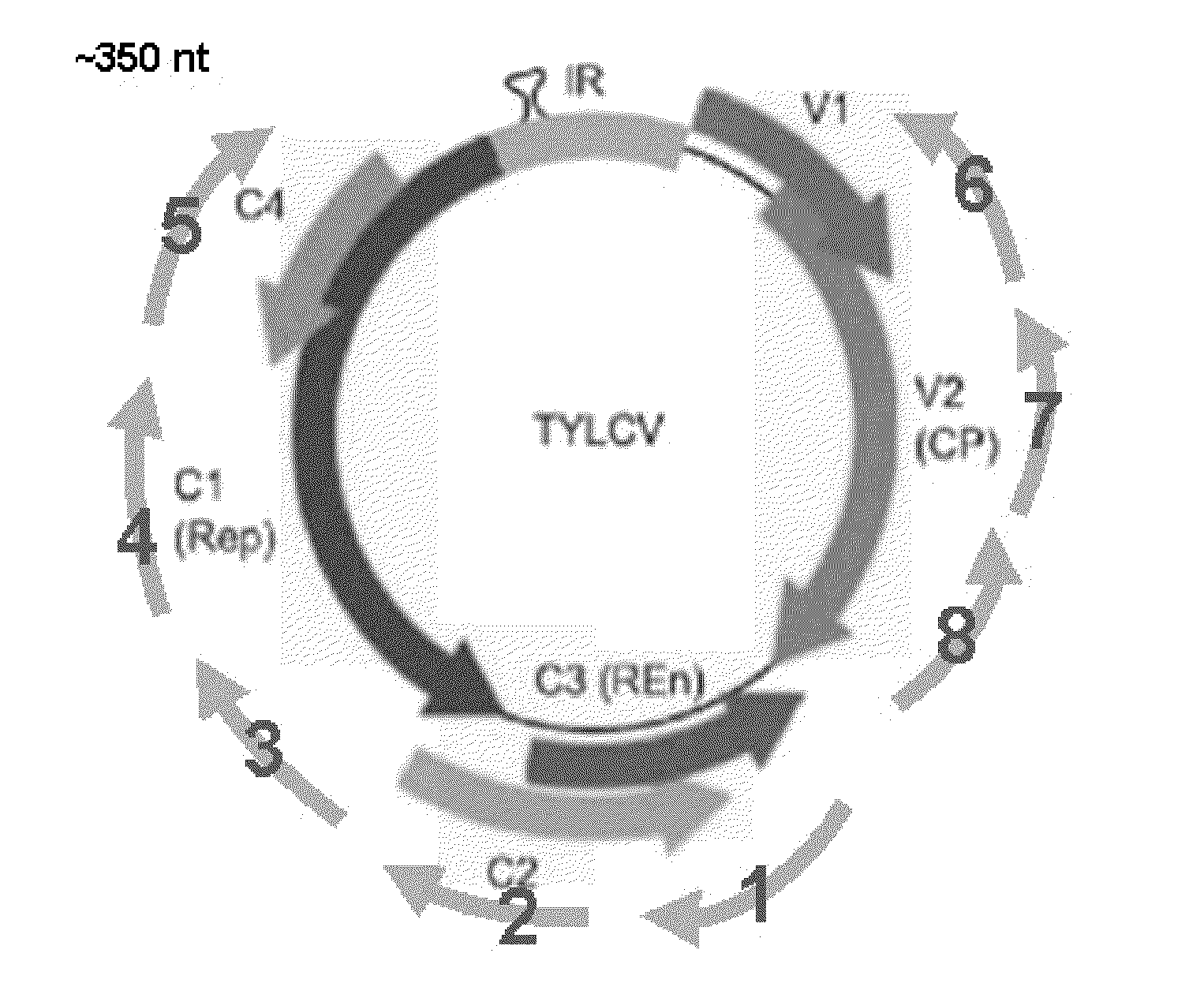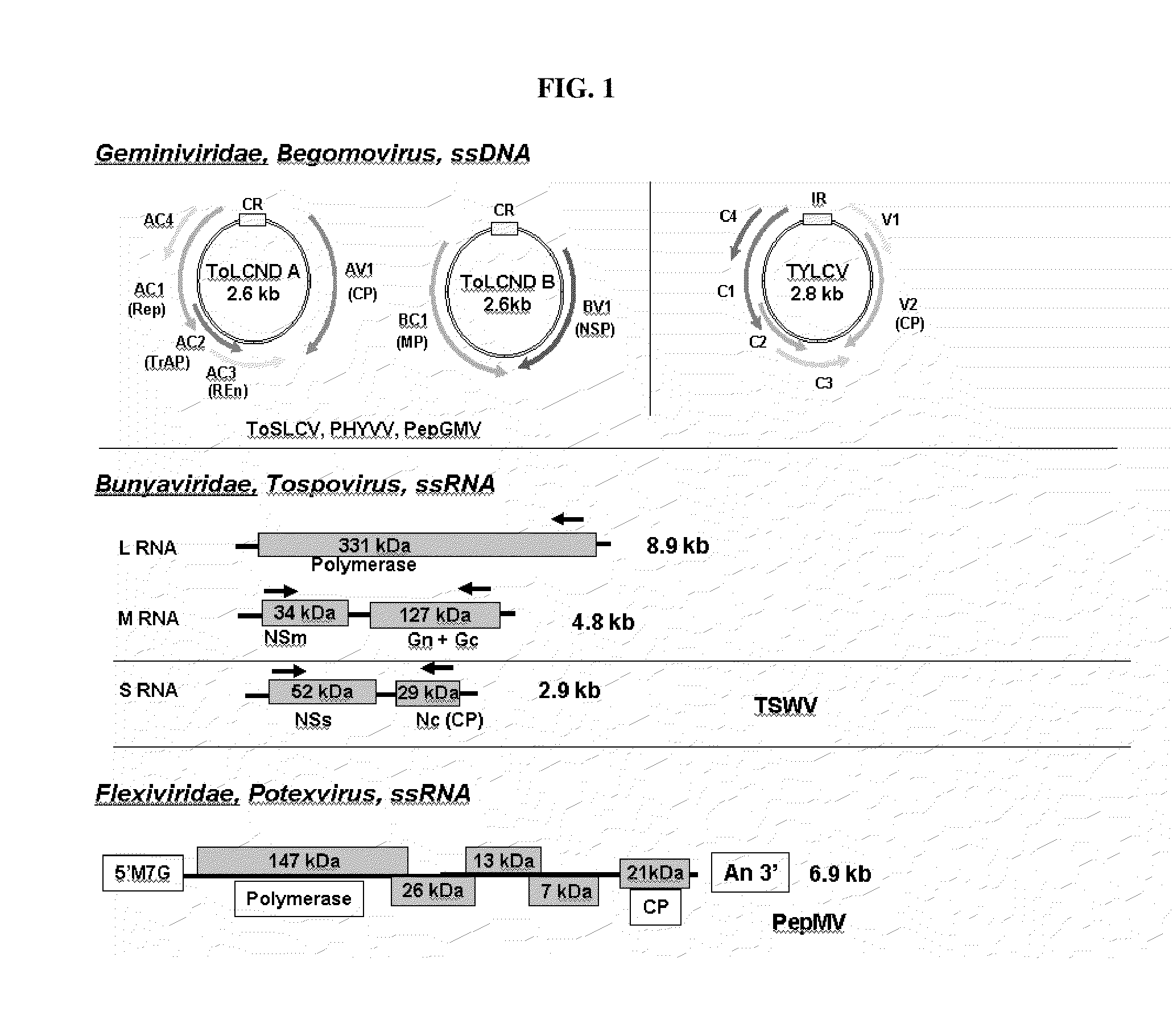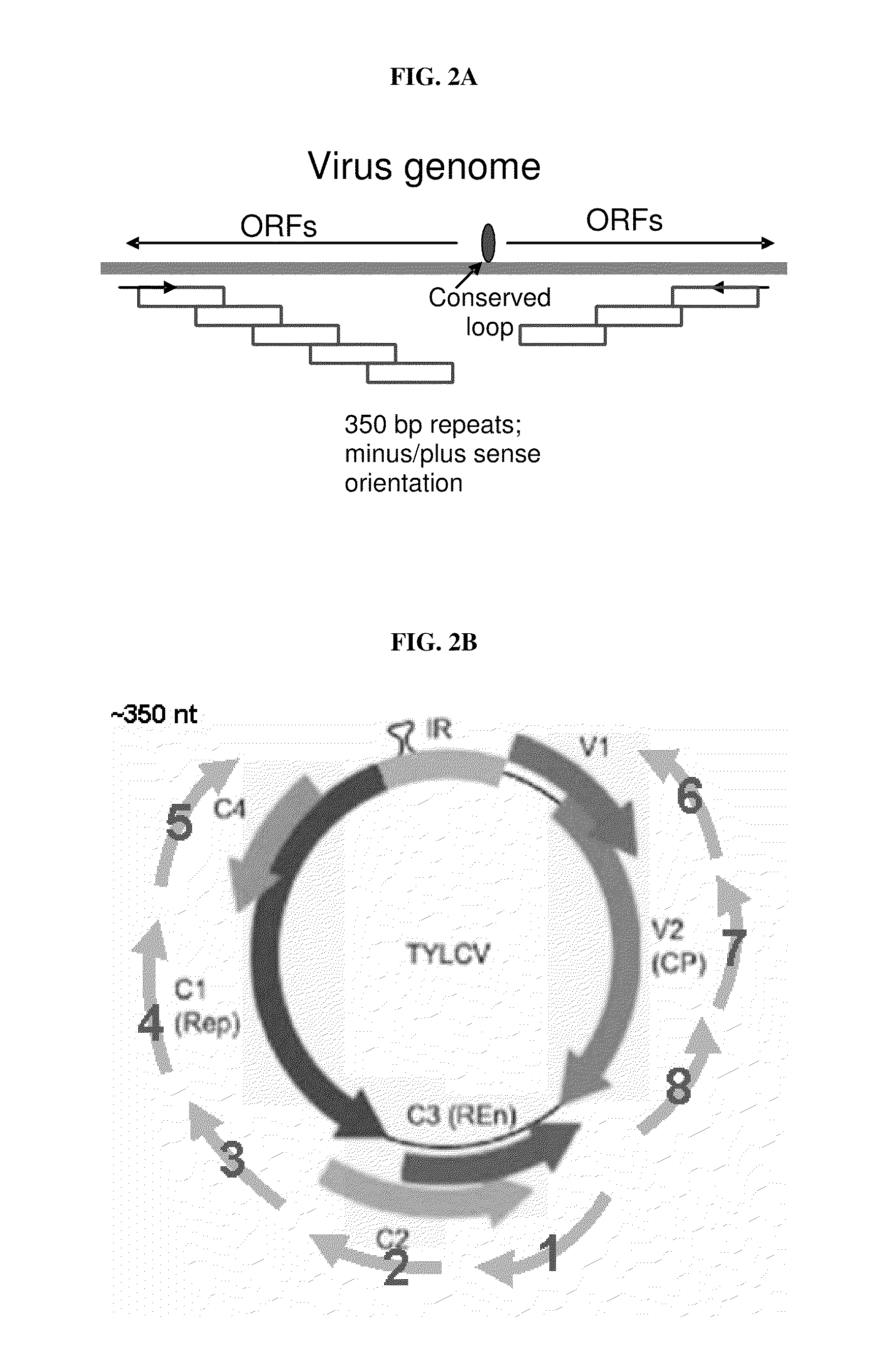Multiple Virus Resistance in Plants
a multi-viral, plant technology, applied in the direction of plant cells, fermentation, biochemistry apparatus and processes, etc., can solve the problems of narrowly based yielding resistance and/or inability to maintain
- Summary
- Abstract
- Description
- Claims
- Application Information
AI Technical Summary
Benefits of technology
Problems solved by technology
Method used
Image
Examples
example 1
Targets for Multivirus Resistance
[0151]Sequences of targeted viruses were assembled from Genbank. FIG. 1 schematically shows the genome organization of representative targeted viruses. For targeted begomoviruses, 58 isolates of Tomato yellow leaf curl virus (TYLCV), 30 isolates of Tomato leaf curl New Delhi virus (ToLCNDV), 5 isolates of Tomato severe leaf curl virus (ToSLCV), 5 isolates of Pepper golden mosaic virus (PepGMV), and 2 isolates of Pepper huasteco yellow vein virus (PHYVV) were analyzed. For targeted tospoviruses, Tomato spotted wilt virus (TSWV), Groundnut bud necrosis virus (GBNV) and Capsicum chlorosis virus (CaCV), 6 L segments (TSWV: 4; GBNV: 1; CaCV: 1), 23 M segments (TSWV: 20; GBNV: 2; CaCV: 1), and 45 S segments (TSWV: 41; GBNV: 2; CaCV: 2) were analyzed. For isolates of the targeted potexvirus, 13 isolates of Pepino mosaic virus (PepMV) were analyzed (e.g. López et al., 2005; Cotillon et al., 2002). A bioinformatics approach was utilized to identify approximat...
example 2
Virus Segments for RNAi
[0153]Selected viral genomes were divided to ˜350-500bp fragments, partially overlapping by about 50 bp (e.g. FIG. 2A-2D). Efficacy data was collected for the ability of single sequences to control particular virus species when expressed individually in transformed plants. In initial studies, segments corresponding to approximately 2.3 kB out of the 2.7 kB geminivirus DNA-A genome were screened (FIG. 2B; segments 1-8). Likewise, as shown in FIG. 2C, segments 1-8 representing approximately 4 kB out of the 6.5 kB PepMV (potexvirus) genome were tested. FIG. 2D shows the portions of the tripartite tospovirus genome that were tested for efficacy: approximately 1.5 kB out of the 8.9 kB L vRNA (i.e. virus RNA) (segments 1-3); approximately 1.5 kB of the 5.4 kB M vRNA (segments 4-6); and approximately 1 kB of the 2.9 kB S vRNA (segments 7-8).
[0154]In one representative study, a nucleic acid segment corresponding to a part of the TSWV coat protein (nucleocapsid) was te...
example 3
Artificial dsRNA Fusion Constructs for Multivirus Resistance
[0161]Nucleotide segments for dsRNA expression, from two or three of the different virus groups (geminivirus, tospovirus, potexvirus), were also combined in a single expression cassette and plants were generated from transformed cells and analyzed for resistance to more than one virus. This was accomplished by fusing viral genomic fragments that tested effective for generating siRNAs conferring virus resistance, for instance as shown in Example 2. Analogously to Example 2, these sequences were tested as inverted repeat segments in double stranded (dsRNA)-generating constructs, wherein tested constructs comprised a promoter operably linked to a given sequence in an antisense orientation (e.g. SEQ ID NOs:452-454 as described below), followed by a loop sequence, and then the given sequence in a sense orientation, and a transcriptional terminator. After transcription and base pairing of the inverted repeat sequences, the double...
PUM
| Property | Measurement | Unit |
|---|---|---|
| Electrical resistance | aaaaa | aaaaa |
Abstract
Description
Claims
Application Information
 Login to View More
Login to View More - R&D
- Intellectual Property
- Life Sciences
- Materials
- Tech Scout
- Unparalleled Data Quality
- Higher Quality Content
- 60% Fewer Hallucinations
Browse by: Latest US Patents, China's latest patents, Technical Efficacy Thesaurus, Application Domain, Technology Topic, Popular Technical Reports.
© 2025 PatSnap. All rights reserved.Legal|Privacy policy|Modern Slavery Act Transparency Statement|Sitemap|About US| Contact US: help@patsnap.com



